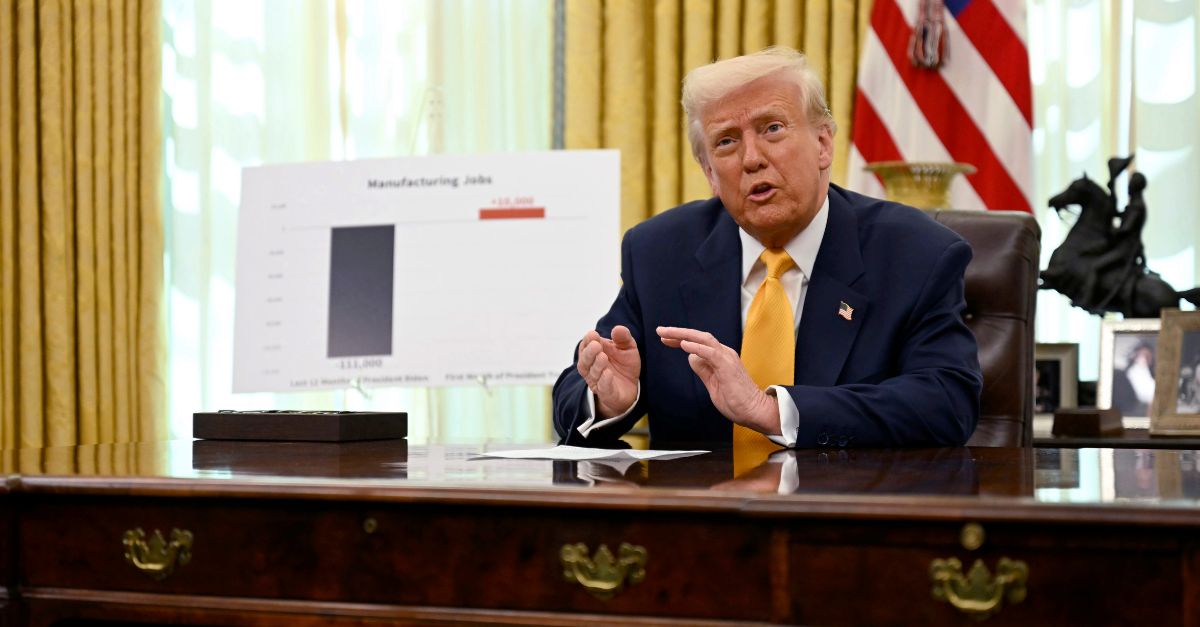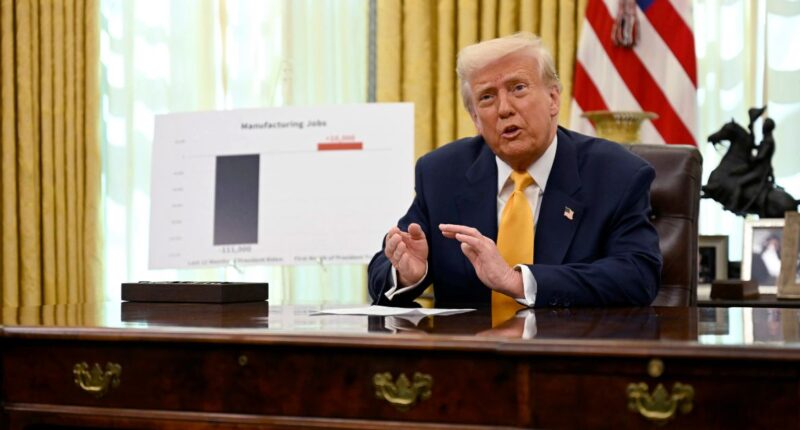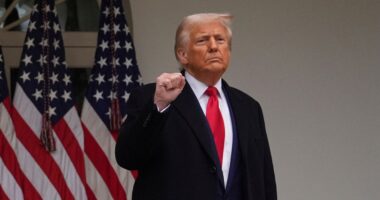
President Donald Trump delivers remarks in the Oval Office of the White House in Washington, Friday, March 7, 2025 (Pool via AP).
The U.S. Supreme Court made a significant decision on Tuesday in favor of the Trump administration. This allows the government to keep around 16,000 federal workers unemployed and without pay while the legality of their firings is being determined by the lower courts.
In a brief two-paragraph order, at least five Supreme Court justices granted a stay on a preliminary injunction issued by U.S. District Judge William Alsup in early March. Alsup’s order had instructed various federal agencies to reinstate the affected workers.
Earlier, Alsup had issued a restraining order in February, labeling the firings as illegal. In a subsequent ruling last month, he criticized the government’s reasoning behind the firings as an attempt to skirt legal requirements.
Now, relying on standing arguments raised by the U.S. Department of Justice, the national appellate court determined the district court’s order simply assumed far too much for far too many.
“The District Court’s injunction was based solely on the allegations of the nine non-profit-organization plaintiffs in this case,” the majority found. “But under established law, those allegations are presently insufficient to support the organizations’ standing. This order does not address the claims of the other plaintiffs, which did not form the basis of the District Court’s preliminary injunction.”
Modern jurisprudence on Article III standing is widely understood by legal scholars as “conservative standing doctrine.” This judicial theory was created in two cases from the 1920s by conservative judges who sought to restrain the use and limits of constitutional redress. In other words, standing doctrine was created to limit citizens from suing the government over perceived violations of their rights.
While technically procedural in nature — as opposed to relying on underlying arguments in a dispute — standing arguments are fact-intensive and, when made by the government and accepted by the Supreme Court for analysis, often determinative.
In the present case, due to the lack of analysis, it is not clear what the justices found lacking about the plaintiff’s allegations — but the government’s application offers some germane hints.
“In granting the preliminary injunction, the district court relied exclusively on the standing of organizational respondents whose members are end-users of government services,” the successful DOJ filing reads. “Significantly, in entering relief against two of the enjoined agencies, the court appeared to rely solely on the theory that the organizations themselves suffered an injury by having to ‘divert’ organizational resources to ‘counteract’ the effects of the agencies’ actions.”
In more concrete terms, the government mockingly framed the plaintiff’s allegations as “[t]he notion that immediate reinstatement of thousands of probationary employees is the way to improve customer service at national park bathrooms.”
On the other hand, the justices could also be saying the plaintiffs were simply the wrong people to sue over the firings; and therefore any allegations they made, whatsoever, would not justify the issuance of an injunction.
As is typical of an order in a pending case, the majority was not listed. Two members of the court, however, Justices Sonia Sotomayor and Ketanji Brown Jackson, made clear they voted differently.
“Justice Sotomayor would deny the application,” the order notes — continuing with the trend of limited information.
“Justice Jackson would have declined to reach the standing question in the context of an application for emergency relief where the issue is pending in the lower courts and the applicants have not demonstrated urgency in the form of interim irreparable harm,” the order continues. “Thus, she would have denied the application.”
Love true crime? Sign up for our newsletter, The Law&Crime Docket, to get the latest real-life crime stories delivered right to your inbox.
The short but potent ruling from the unknown majority offers a timeline that will likely keep the mass-fired probationary workers drawing unemployment benefits for the foreseeable future.
The high court ruled that the stay would remain in effect for as long as it takes the final case, on the merits, to be appealed to the 9th Circuit Court of Appeals. And, even then, the stay of Alsup’s order will last for as long as it takes the justices themselves to decide whether the appeals court got the decision correct, if either side appeals the eventual appeals court ruling with a “timely sought” petition for writ of certiorari.
“Should certiorari be denied, this stay shall terminate automatically,” the Supreme Court ruled. “In the event certiorari is granted, the stay shall terminate upon the sending down of the judgment of this Court.”













